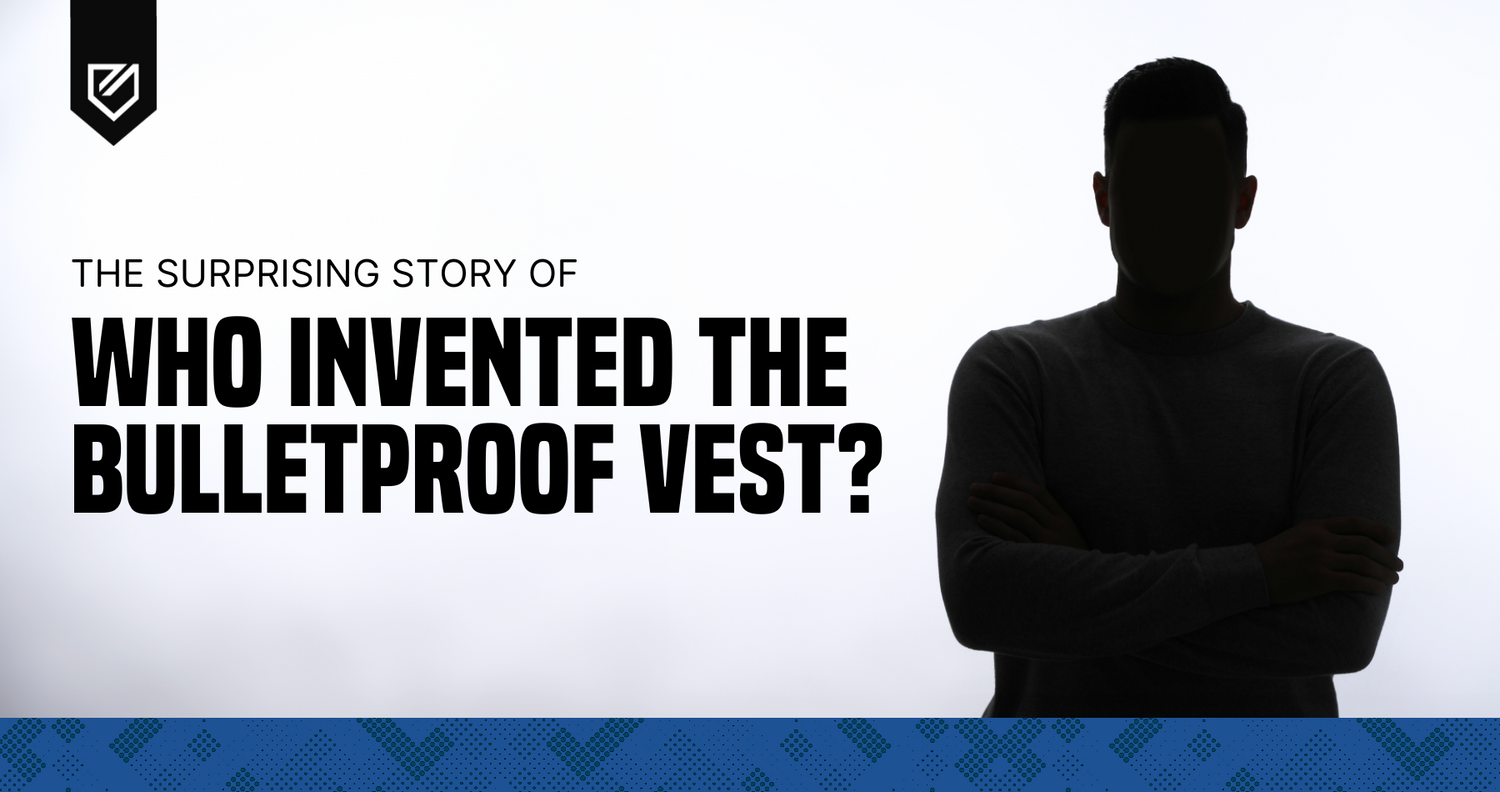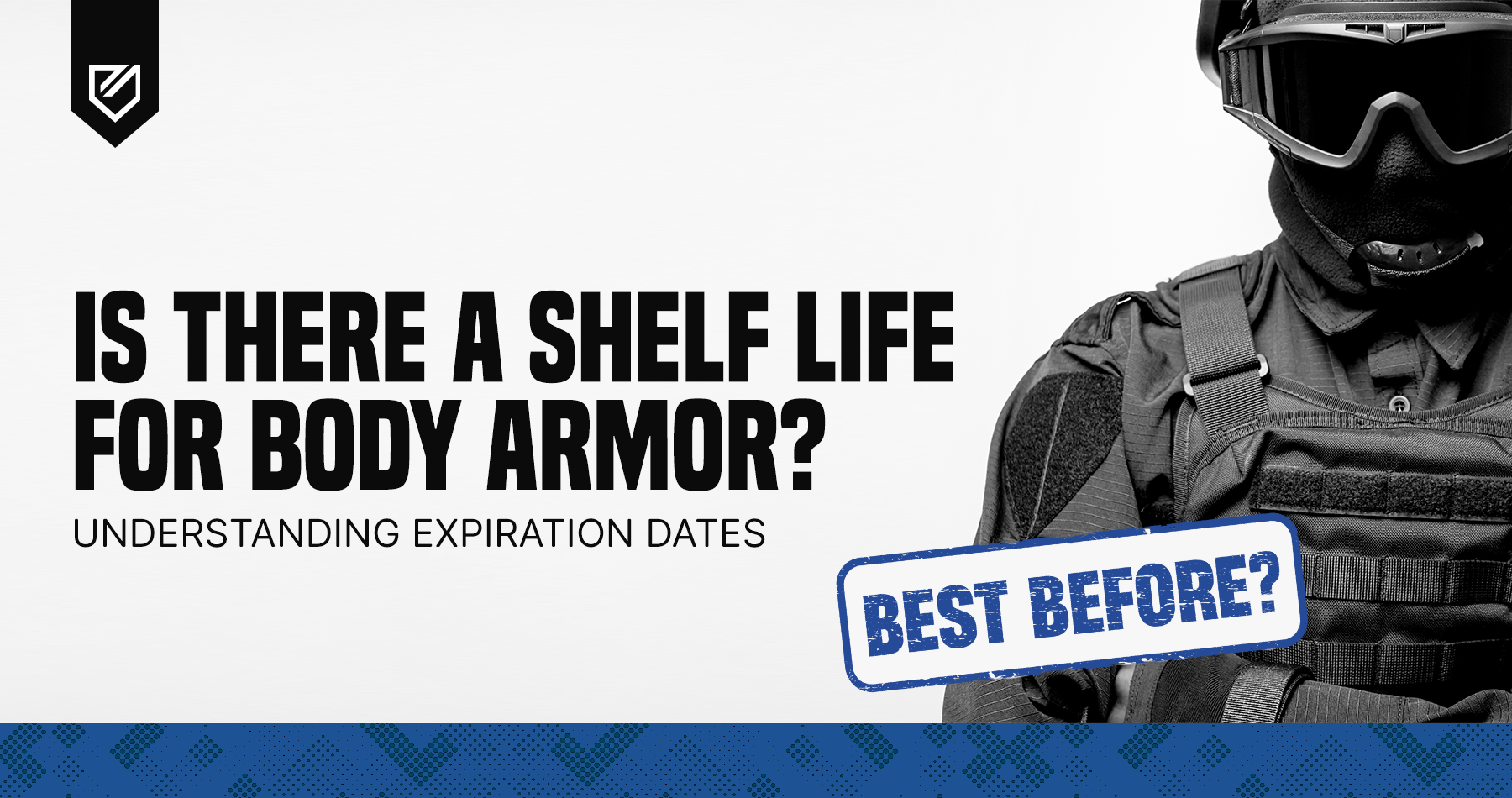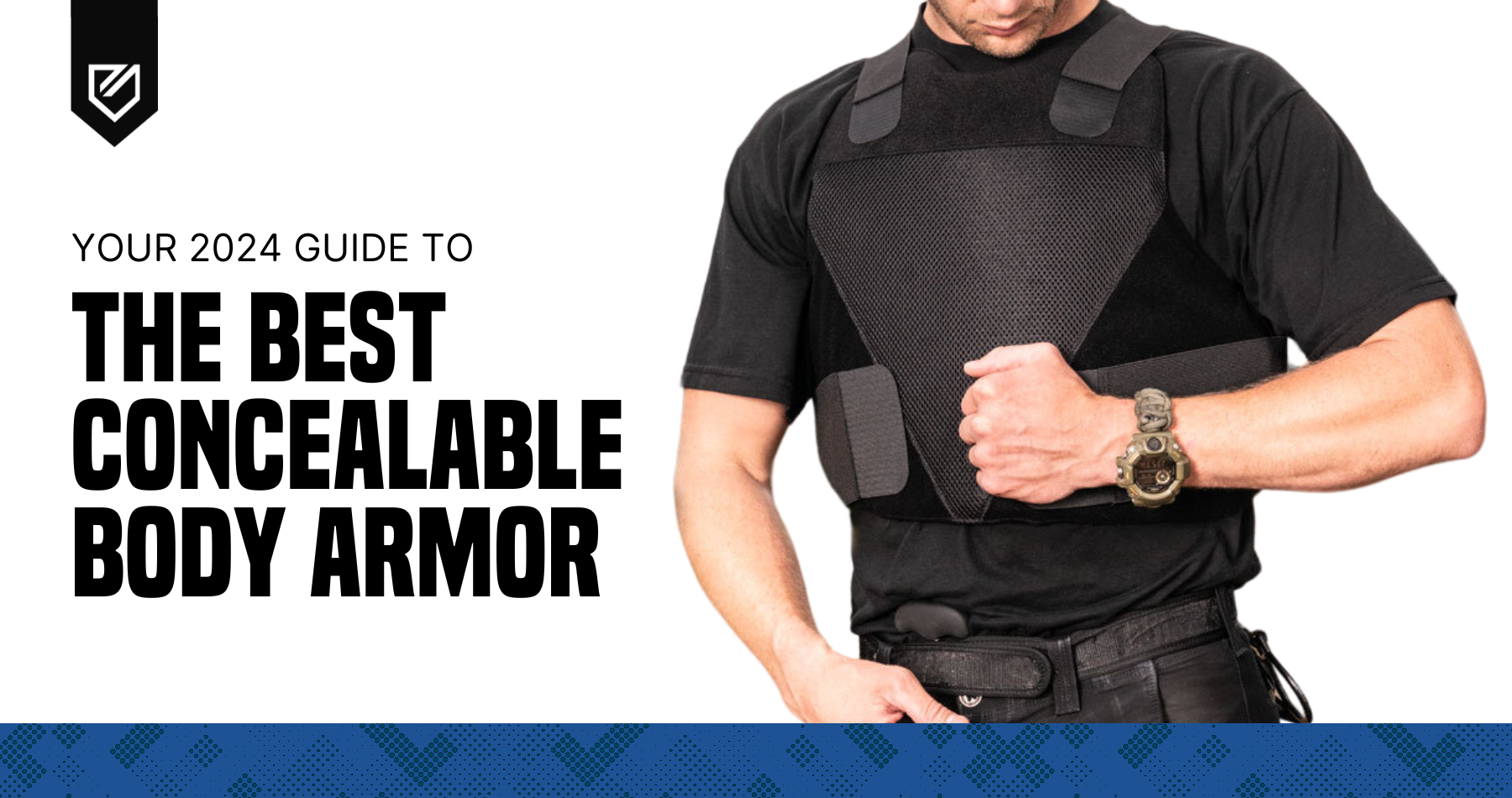Bulletproof vests have undergone a fascinating journey since their invention. What began as a novel idea to protect individuals from lethal threats has evolved into a sophisticated piece of gear that saves lives every day.

In this article, we'll explore who invented the bulletproof vest, when this critical invention came to be, and how it has evolved into the life-saving technology we know today.
The Dawn of Bulletproof Protection
The idea of armor to protect the human body in combat is a concept that stretches far back into history, long before the invention of firearms. Ancient civilizations like the Greeks, Romans, and even earlier cultures used various forms of body armor to protect their soldiers in battle.
These early versions of armor were typically made from materials like leather, bronze, and later, chainmail, designed to defend against blades, arrows, and other hand-held weapons of the time.
Throughout the medieval period, armor continued to evolve, with plate armor eventually replacing chainmail as the gold standard for protection. As history pressed on, and gunpowder became a game-changing factor in warfare, traditional forms of armor began to lose their effectiveness. It was evident that a new form of protection would be needed to address the growing threat of bullets and artillery.
The Man Behind the First Bulletproof Vest
When diving into the origins of this groundbreaking invention, one name that may not immediately come to mind is Father Casimir Zeglen, a Catholic priest from Chicago. However, he was a pioneer in the development of what would eventually evolve into the modern bulletproof vest.
Father Zeglen found his calling for this unusual project in the face of a devastating event—the assassination of Mayor Carter Harrison Sr. of Chicago in 1893. Deeply affected by the violent loss, Zeglen realized the urgent need for a new kind of personal protection against firearm threats.
This realization led him to embark on developing a silk-based vest, aiming to create a garment that could resist bullets and offer better protection.
The Silk Armor
Zeglen’s innovative design hinged on multiple layers of silk fabric tightly packed together. At the time, silk was known for its tensile strength and was one of the stronger natural fibers available.
His vest proved to be somewhat effective against low-velocity rounds, such as those from handguns. During tests, the vest was able to slow down bullets and, in some instances, stop them altogether.
Limitations and Public Attention
While Zeglen’s invention was a significant milestone in individual protection, it wasn't without its flaws.
First, the vest was not entirely bullet-resistant, particularly against high-velocity rounds.
Second, the cost of producing such a vest was astronomically high due to the expense of silk at the time.
As a result, the silk-based vest was far from being a practical, widespread solution. However, it did capture public attention and imagination. Various exhibitions even showcased the vest, and it became a subject of public discussion, leading some influential figures of the time to invest in their own silk vests.
Despite its limitations, Father Zeglen's work laid the foundational concept for future developments in bulletproof technology. His endeavor marked one of the first steps in the continuous journey towards improving personal protection against ballistic threats—a journey that would, over the years, bring us the advanced bulletproof vests we rely on today.
World Wars and Beyond
As warfare technology evolved, so did the need for more robust protective gear. During World War I and World War II, various types of armor were introduced, mainly for vehicle and aircraft protection. Personal body armor remained cumbersome and largely inefficient.
The Emergence of Flak Jackets
The concept of the "flak jacket" was birthed during World War II, primarily designed to protect aircrews from the flak—anti-aircraft artillery shells—they encountered during bombing runs. These jackets were constructed from layers of ballistic nylon and were designed to stop shrapnel, flying debris, and low-velocity rounds.
Although they were a step forward in terms of personal protection, their scope was limited. They were ineffective against bullets, particularly those fired from high-velocity guns, meaning ground troops could not rely on them for full protection.
The Vietnam Era and the M-1951
Fast forward to the Vietnam War, and the quest for effective body armor took another significant turn.
The M-1951 armor vest, composed of Doron Plate (a type of fiberglass laminate), was introduced. The design offered an improvement over its predecessors by providing some level of protection against shrapnel and bullets.
However, the M-1951 had notable drawbacks. Weighing up to 22 pounds, it was cumbersome for soldiers navigating the difficult terrains of Vietnam. Moreover, it was still not adequately effective against high-velocity rounds, limiting its efficacy in many combat situations.
Modern Innovations and the Kevlar Era
In the 1970s, the game changed completely with the invention of Kevlar by chemist Stephanie Kwolek. Unlike previous materials used in bulletproof vests, Kevlar was lightweight, flexible, and immensely strong. This breakthrough led to the widespread use of bulletproof vests in police forces and military units worldwide.
Kevlar and Its Impact
When Kevlar entered the scene, it dramatically changed the landscape of personal protective equipment. Until then, the materials used in bulletproof vests, such as metal plates or bulky composites, made them heavy, uncomfortable, and impractical for everyday use.
Kevlar, a synthetic fiber with incredibly high tensile strength, introduced a new paradigm. Not only was it effective in stopping bullets, but it also was significantly lighter than traditional materials, offering unprecedented comfort and flexibility.
Here are the significant benefits of Kevlar that impacted the modern-day bulletproof protection as we know it today:
- Lightweight: Kevlar vests are significantly lighter than their metal or composite counterparts, making them more comfortable to wear for extended periods.
- High Tensile Strength: The synthetic fiber used in Kevlar has extremely high tensile strength, making it capable of stopping bullets and providing robust protection.
- Flexibility: The material allows for greater range of motion, making it ideal for law enforcement officers and military personnel who need to move quickly and freely.
- Durability: Kevlar is resistant to wear and tear, ensuring a longer lifespan for the vest compared to other materials.
- Moisture Resistance: The fiber is less susceptible to water damage, making it more versatile in various environmental conditions.
- Ease of Use: Kevlar vests are often designed to be user-friendly, with features like adjustable straps and breathable fabric, enhancing the wearer's comfort.
- Adaptability: Kevlar is not just used in vests but also in helmets, shields, and other protective gear, making it a versatile choice for a wide range of applications.
- Everyday Practicality: Due to its lightweight and flexible nature, Kevlar vests can be worn during regular activities, effectively making protection an easy part of daily life for law enforcement and security personnel.
Into the 21st Century
Today's bulletproof vests are a marvel of engineering, combining materials like polyethylene, ceramic, and even metal alloys for specialized protection. Advances in nanotechnology are paving the way for even lighter and more resilient materials.
With advancements in technology, the variety of bulletproof vests has expanded, offering specialized options like covert vests, stab-resistant vests, and even vests designed specifically for women. The development of modular designs also allows for customizable protection, catering to the specific needs of the user.
Final Thoughts
From Father Casimir Zeglen's silk vest to the modern Kevlar designs, bulletproof vests have come a long way. As technology continues to advance, we can expect even more innovations in personal protective gear. It's a testament to human ingenuity how a simple piece of clothing has evolved into a sophisticated life-saving device.
Understanding the history and evolution of bulletproof vests is more than an academic exercise; it's an insight into the ongoing quest for personal safety. As vests continue to evolve, staying informed ensures that you're making the best choice for your protective needs. Make sure you keep up with the latest advancements to benefit from the highest level of protection available.




Leave a comment
This site is protected by hCaptcha and the hCaptcha Privacy Policy and Terms of Service apply.